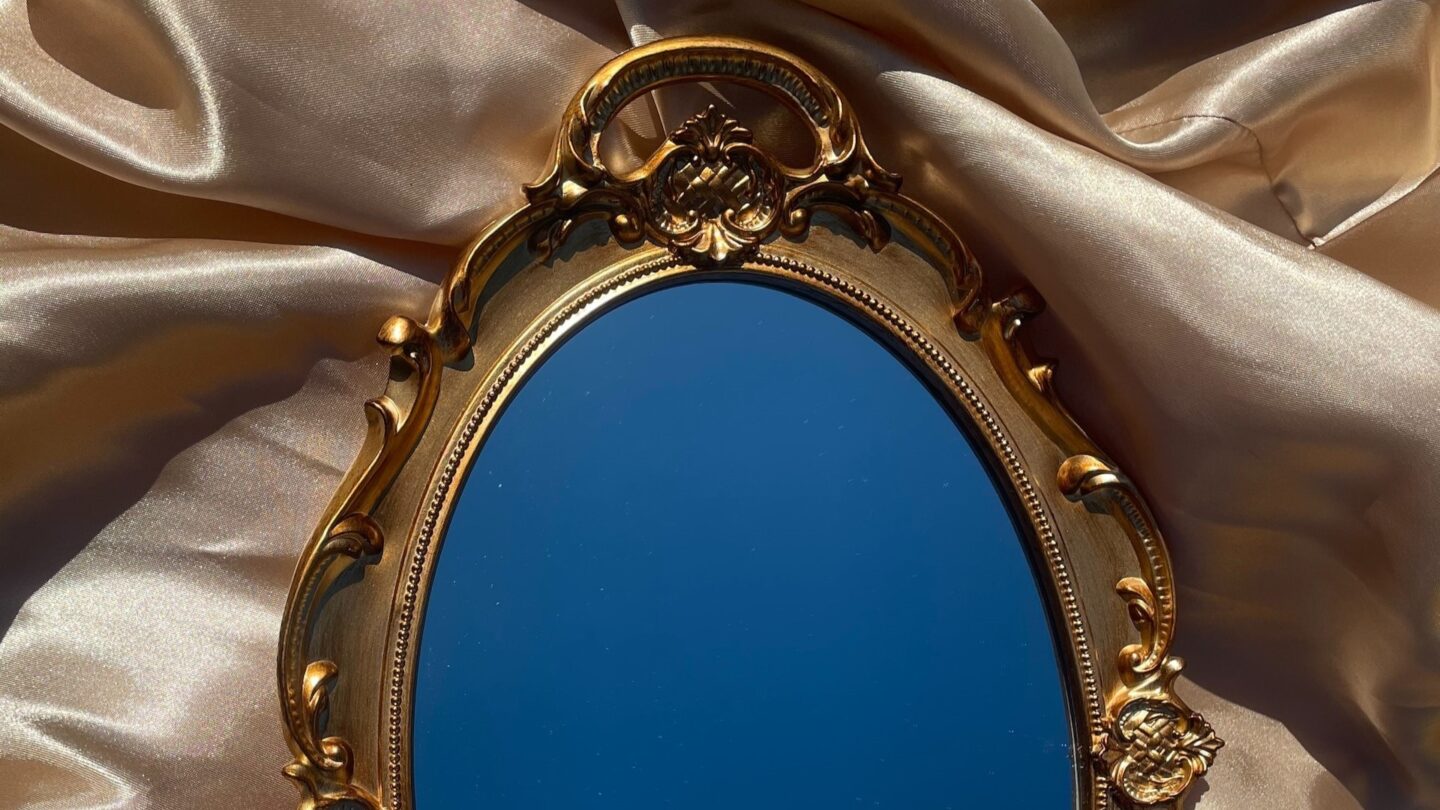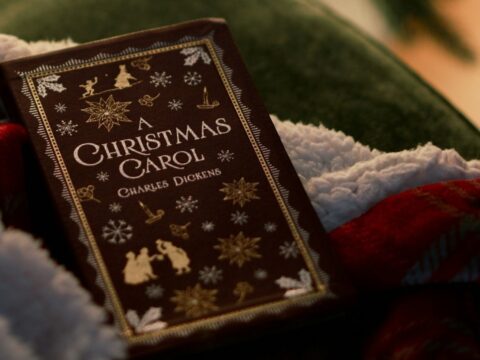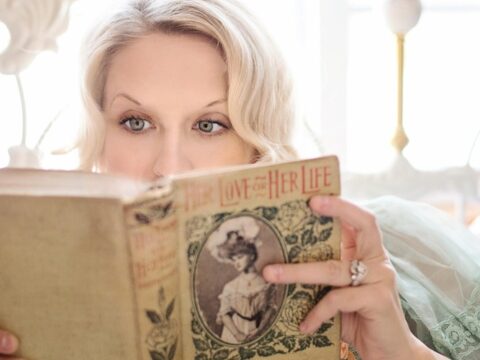There’s a famous quote out there from Scottish author George MacDonald: “All mirrors are magic mirrors.” And I don’t think George was wrong.
Mirrors are capable of creating mind-bending optical illusions, making rooms look bigger, and even generating infinite images. Seeing your own reflection can be a pretty uncanny experience, one that most of us are desensitized to. Everyone can afford a mirror these days, but mirrors were once an expensive luxury owned only by the rich. This combination of rareness and mystique is probably why magic mirrors have become such a hallmark of storytelling—and superstition.
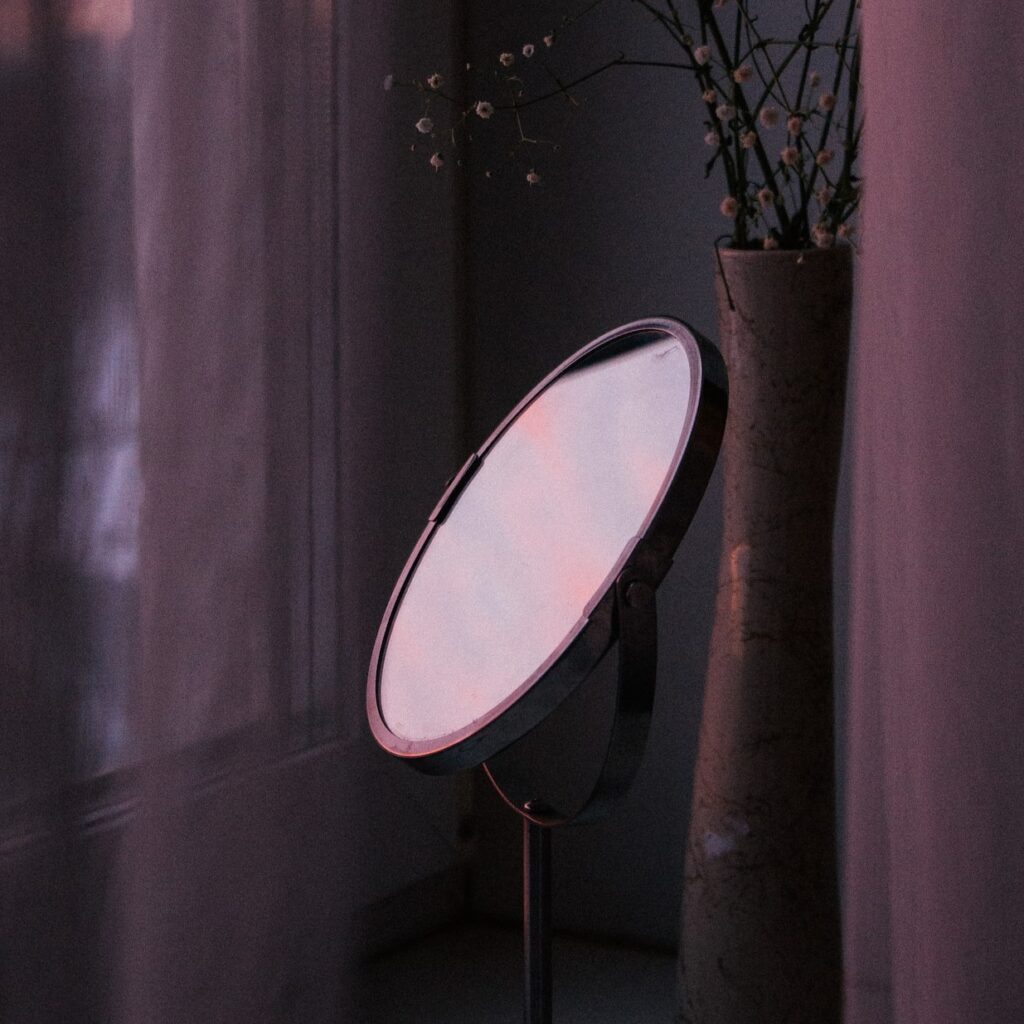
There Are Magic Mirrors Everywhere
Really though, countless examples of enchanted mirrors exist in literature. You’ve got Lewis Carroll’s Through the Looking Glass where Alice steps through her mirror into a bizarre alternate world. The aforementioned George MacDonald wrote a story within a story about a man who frees the soul of his lover trapped in a magic mirror. Then you have classic Greek mythology: Perseus who defeats Medusa with a mirror-like shield. Narcissus who falls in love with his own reflection.
Or how about my personal favorite: Tennyson’s poem “The Lady of Shalott.” The main heroine is trapped in a tower, cursed to be isolated from the outside world. She weaves a tapestry day in and day out and can only look at the images reflected in her magic mirror. When she chooses to look directly through her window at the dashing Sir Lancelot, her magic mirror promptly announces her doom.
Out flew the web and floated wide;
The mirror crack’d from side to side;
“The curse is come upon me,” cried
The Lady of Shalott.
“The Lady of Shalott,” Alfred, Lord Tennyson
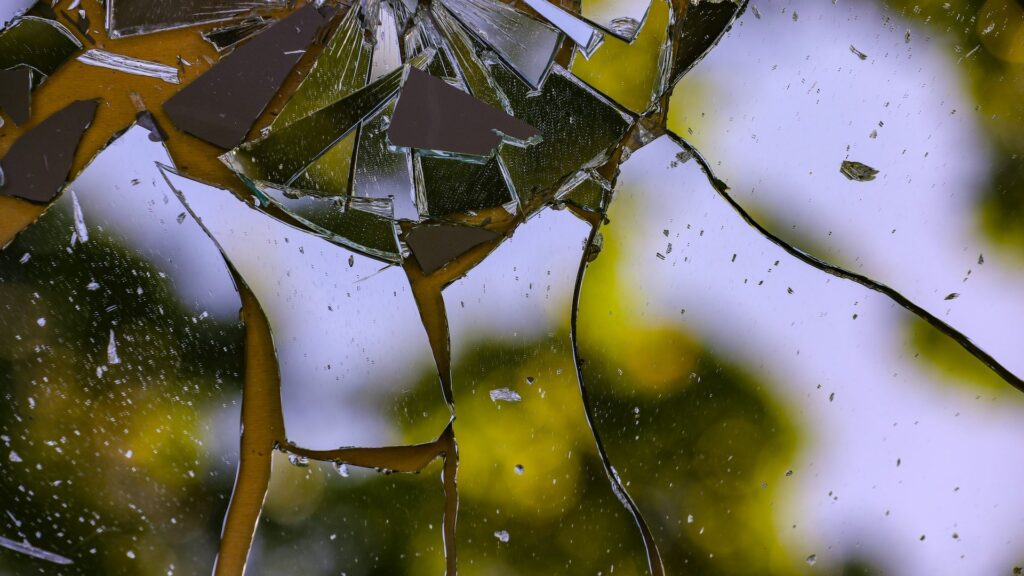
Honestly, “The Lady of Shalott” and her cursed magic mirror fit right in with the fairy tale genre. I’ve always thought the heroine of this poem seemed like a medieval Rapunzel trapped in her tower. Or perhaps a medieval Beauty from Beauty and the Beast with only a mirror to see the world beyond her stone walls.
Because Curses and Magic Mirrors Are Everywhere in Fairy Tales Too
There are several different roles mirrors play in these stories, and the bigger messages of the magic mirror archetype are truly fascinating. I can’t possibly cover every fairy tale with a magic mirror, but I will cover the most famous examples and a few obscure ones that I guarantee you’ve never heard before. Please forgive me for focusing on western fairy tales since I myself have European roots. Western tales are also extraordinarily well documented, which makes my research oh so much easier.
So then. Let’s take a walk through the fairy tale gallery of mirrors.
Starting with the King of All Magic Mirrors
The magic mirror in “Little Snow White” is probably the first example that comes to mind because it’s so outrageously well known. I’ve written about the evil queen character before, but where exactly did she get this mirror? Did she enchant it herself? Buy it from a sketchy estate sale? Inherit it from her vain ancestors that came before her? There are no clues where the mirror came from in the original text of Snow White, but we know that the mirror answers questions—and that this mirror always speaks the truth.
This is a common theme amongst magic mirrors generally: mirrors don’t lie, and their magic reveals the truth. I admit that I’m a little nonplussed that the only thing the evil queen asks this mirror is whether someone out there is more beautiful than her. Like really? You have an all-knowing, all-seeing mirror that could offer you limitless power over any leader on earth, and all you want to know is your number in the hotness lineup? Okay then . . .
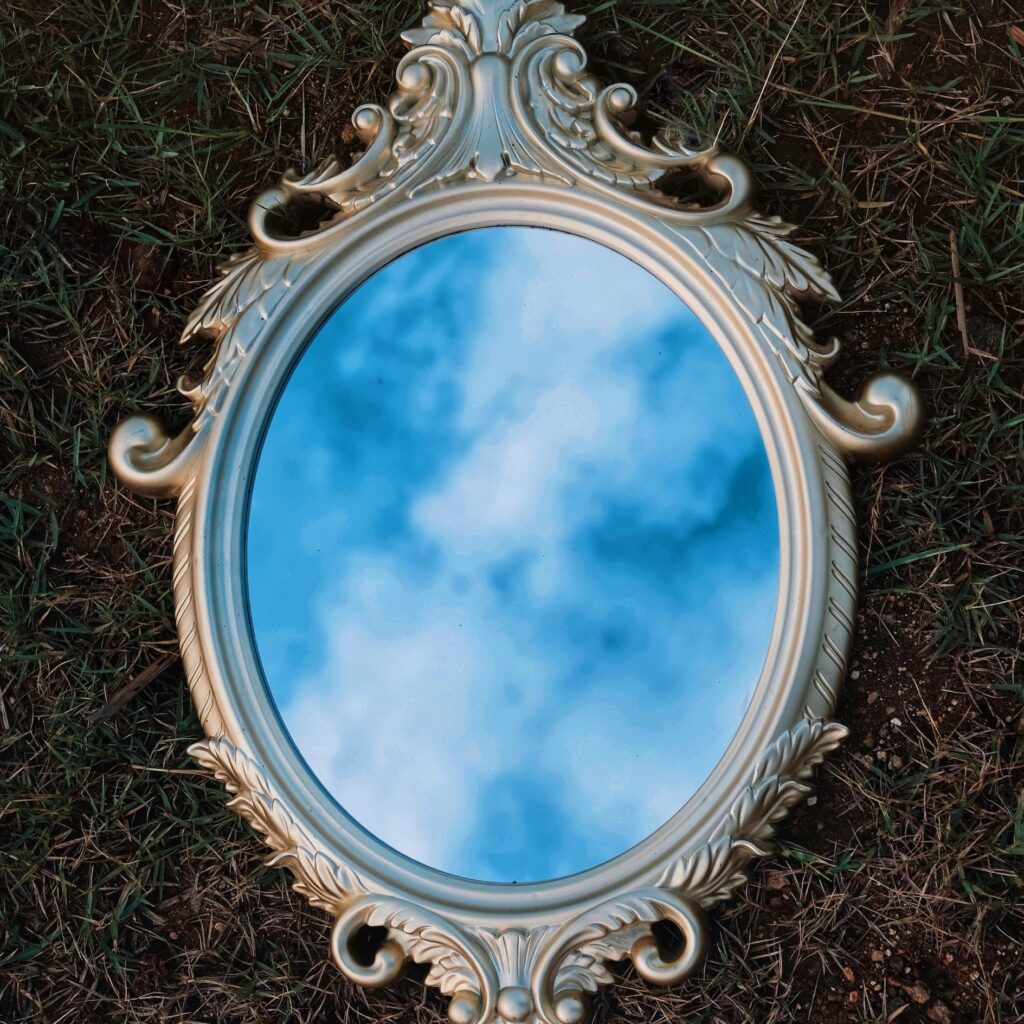
But Whose Voice Does the Queen Hear When the Mirror Speaks?
I have always wondered this about the Snow White fairy tale. When the mirror responds to the queen’s questions, is it her own voice reciting these truths? Or is the mirror possessed by the soul of an all-knowing fortuneteller? Or simply a poor imprisoned soul who has been cursed to answer any questions truthfully for all eternity?
There’s plenty of lore out there about souls trapped inside of mirrors. This is why many cultures drape mirrors with fabric or turn them toward the wall when someone dies: to prevent the soul of their deceased loved one from entering the mirrors and haunting the living. Maybe that’s how the evil queen’s mirror became a talking mirror. It certainly makes you wonder whose truth-telling soul may be trapped inside . . .
Regardless, Mirrors Show Us All Truths We’d Rather Not See
How often do we hear the phrase that someone “needs to look in the mirror” when they’re being hypocritical or ironic? Mirrors do have a way of showing us exactly what we look like even when we’d rather not know. Because somehow our reflections often highlight the aspects of our faces and bodies that we’d appreciate NOT knowing exist.
Perhaps this is the real reason why mirrors are a symbol of truth: their cold, hard reflections leave little room for imagining away reality. And that’s the case even for ordinary, non-magical mirrors. The truth is even more undeniable coming from a mirror with magic.
But Not All Truth-Telling Mirrors are Enchanted . . .
Two other more obscure fairy tales introduce a level of realism to the magic mirrors archetype. One is from a collection of stories from Spain and Portugal. In this tale, a handsome king is looking for a bride. His wise court barber demands that any eligible maiden must first look in his magic mirror. If the lady does not have a pure heart, the blemishes of her character will appear as spots on the mirror.
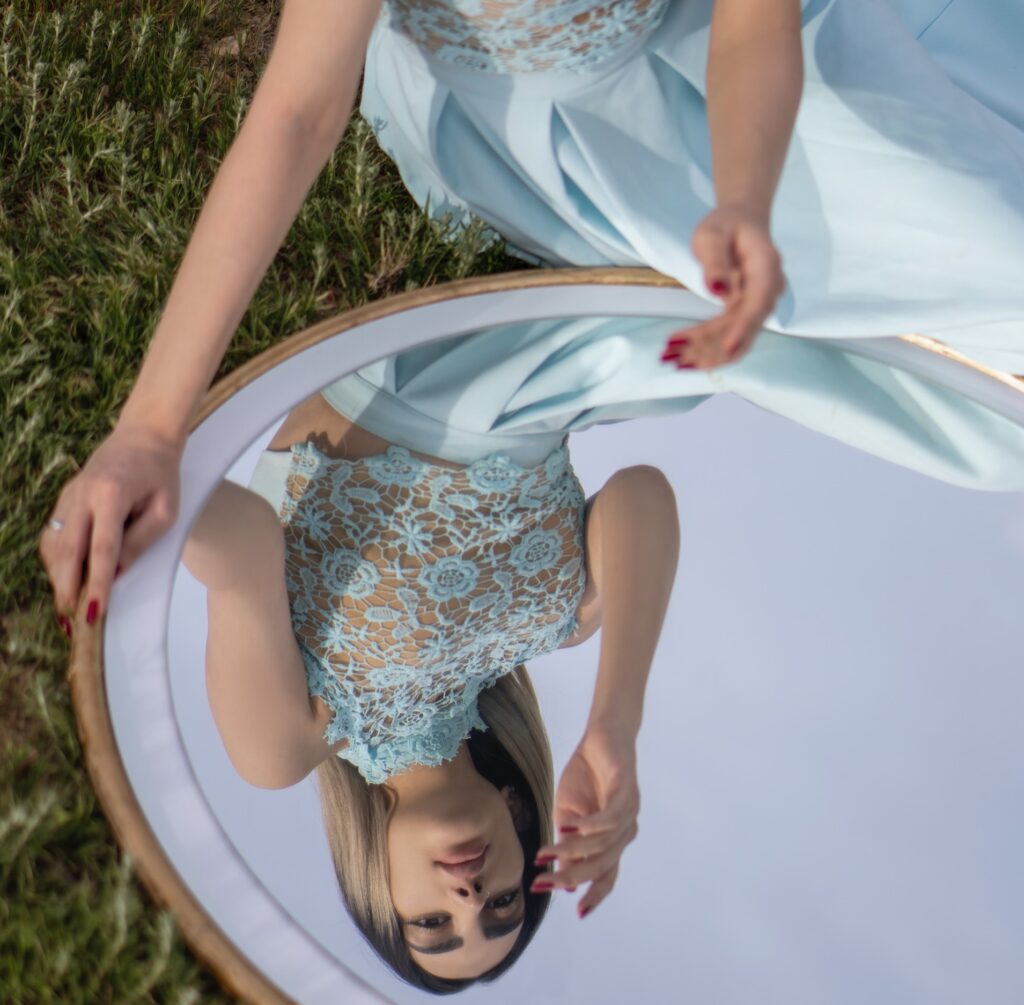
This warning scares off all the proud women of the kingdom from even attempting to look in the mirror. When only a beautiful and innocent shepherdess is brave enough to look, the barber admits that “the only magic about my mirror is that which the evil consciences of the ladies of Granada conjure up.” The other women are immediately angry that they were tricked, but the self-selection of the gold diggers has already happened. The pure-hearted shepherdess then pulls a Cinderella act and marries her king.
Another Example of a “Magic” Mirror
This one is found in the Japanese fairy tale “The Mirror of Matsuyama.” In this simple yet lovely story, a mother falls tragically ill and gifts her daughter a beautiful mirror. The mother tells her daughter to look in the mirror whenever she misses her and she will see her mother’s face. After her death, the daughter discovers her claim to be true and believes that her mother’s soul is in the mirror. Only years later does she realize that she’s seeing her own face in the mirror, which has grown into the spitting image of her mother.
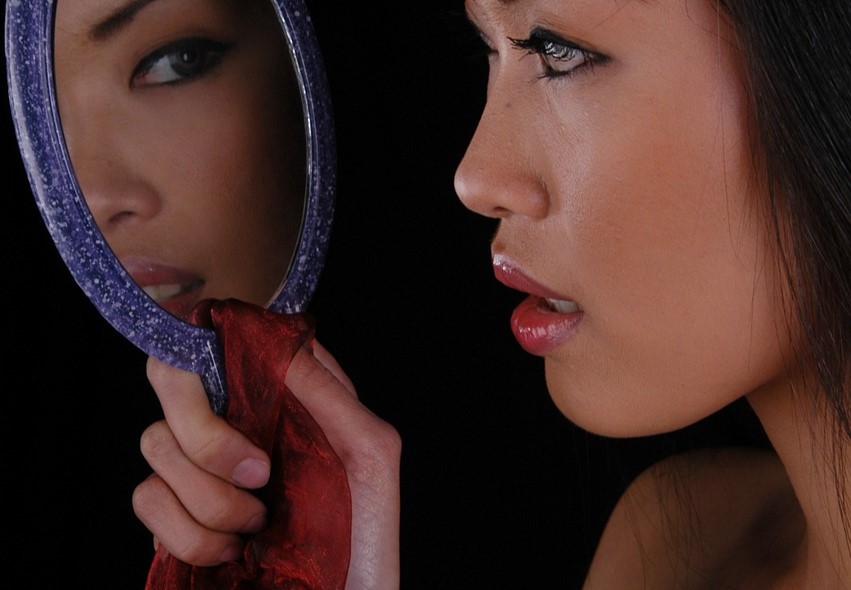
I actually love the lack of magic in both of these stories. These mirrors reveal reality without any spells at all. One is the center of a clever deception (gotta love a fairy tale trickster), and the other reveals how a young girl is becoming more like her mother every day. Both are great examples of mirrors speaking the truth in a way no other symbol could—and how even a normal mirror can seem magical to those who look into it.
What About Mirrors That Show People in Other Places?
Yet another truth-telling power of magic mirrors is showing images of people and places removed. In medieval stories, witches and wizards looked into crystal balls or enchanted mirrors to divine the future or spy on people. This activity was known as “scrying,” and there are plenty of stories where mirrors are used in this way.
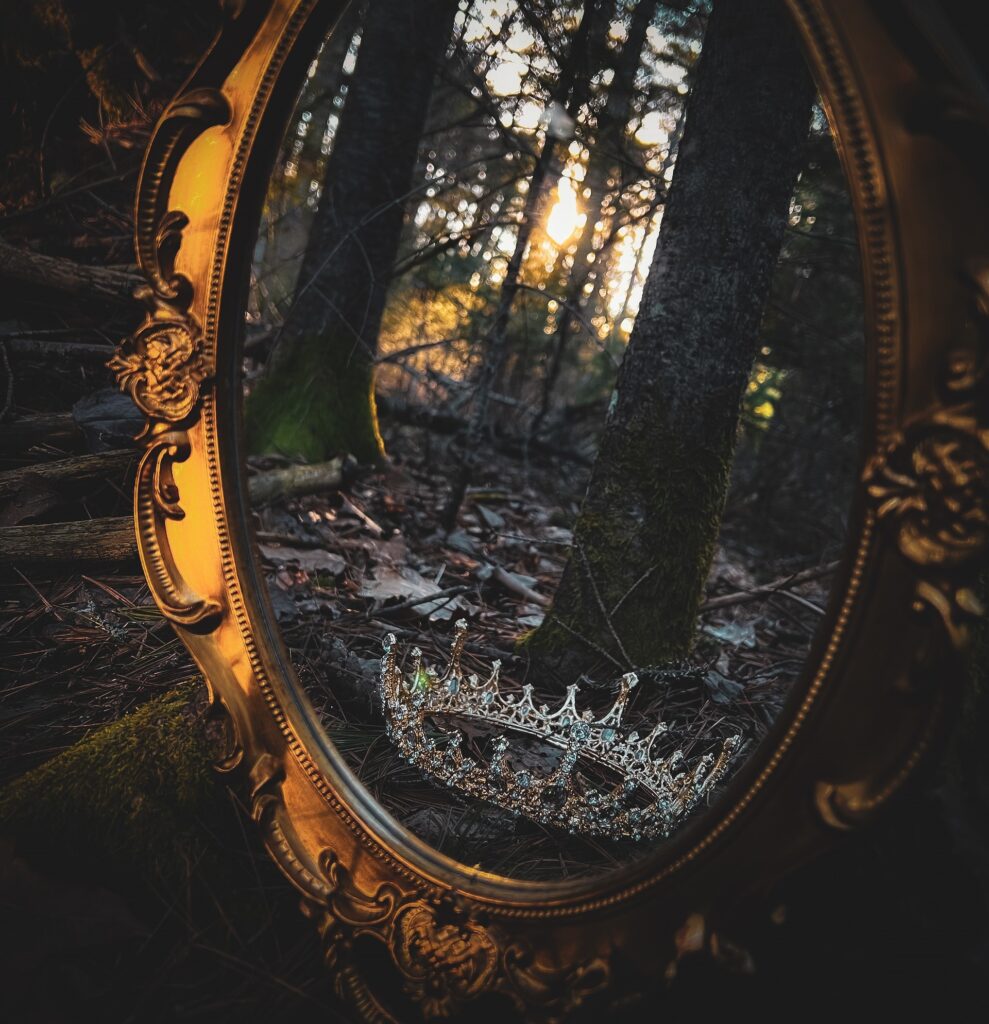
One of the best fairy tale examples of this is the gorgeous Beauty and the Beast. In Madame de Beaumont’s original version, Beauty has a magic mirror in her private chamber in which she sees images of her father while she’s living in the Beast’s castle. Like the mirror of Matsuyama, this mirror is a means of connection with a missing parent, alive this time, but also far, far away.
Once again we’ve discovered a case of a mirror being a portal. Not one Beauty can step into to visit her home, but an emotional portal so she can remember her family. It’s debatable whether this magic mirror is a blessing or a curse as Beauty observes her father’s despair at losing his youngest daughter forever. But the images also give Beauty a reason to leave the castle and prove her loyalty to the Beast by eventually returning.
So Far, Most of these Magic Mirrors Are Pretty Neutral
I realized as I was reading all these different stories that most magic mirrors are simple tools in their stories. Magic mirrors are neither good nor bad. They’re just there, waiting to be used for good or evil purposes. A mirror can slay a Medusa or help a child remember their lost parent. It can also fuel terrible outcomes like the wicked queen’s desire to kill Snow White. Or Narcissus’s suicide when he realizes he can never have the object of his desire. Like any mirror, magic mirrors are merely a reflection of the person looking into them.
For the most part, mirrors just tell it like it is and leave the mortals to deal with the truth however they see fit. But not all mirrors are truth-tellers . . .
A Magic Mirror that Bends Reality
There are a few examples of magic mirrors that have powers beyond simple delivery of information. And both are somewhat malevolent in nature.
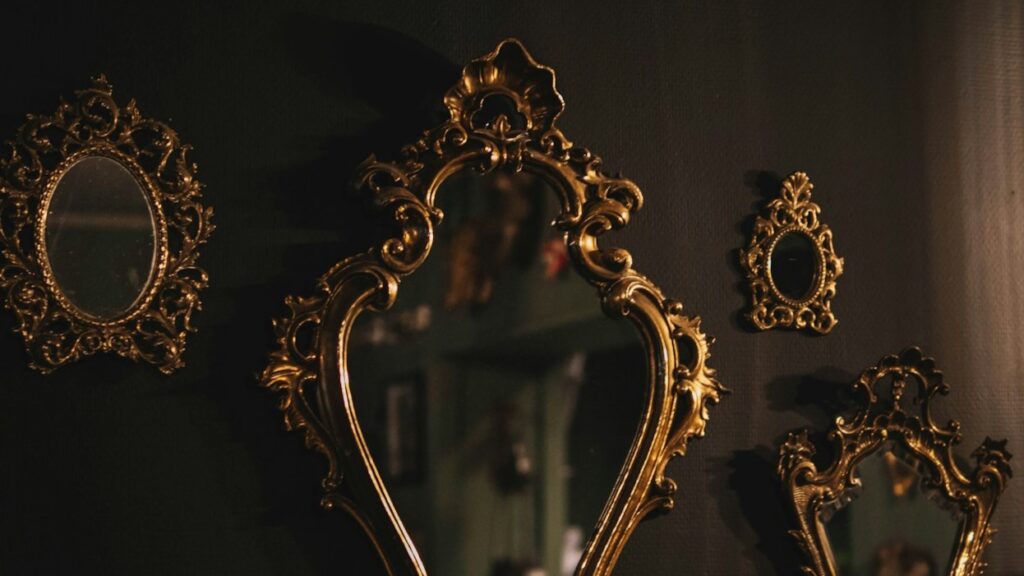
The first is the magic mirror in Hans Christian Andersen’s The Snow Queen. This entire fairy tale kicks off with an evil magical mirror shattering. This mirror’s evil owner—a demon, hobgoblin, or troll depending on the translation—designed it to do the opposite of most mirrors. Rather than showing the truth, it distorts reality by making good things appear bad and bad things appear good. When the evil mirror shatters, tiny fragments no bigger than grains of sand blow across the earth and into the eyes and hearts of mankind. The results are disastrous.
One of the victims of the mirror is the main character’s best friend in the story. This causes the little boy to treat the heroine horribly then get kidnapped by the villainous Snow Queen. But getting back to the mirror, I find it fascinating that this mirror distorts anything good. Mirrors do have a way of emphasizing our worst features at times . . . This story draws attention to how one’s perception can be powerfully altered and wreak havoc when we don’t see the good in the world or in ourselves. Once again, a broken mirror proves to be very bad luck indeed.
Beyond Perception, How About a Magic Mirror that Changes Reality Entirely?
One last magic mirror I’ll add to our list is in a story that hails from Estonia. This tale features a selfish king sending his sons on a quest to find a certain magic mirror. This mirror has the power to make anyone become young simply by looking into its glass. Basically the fountain of youth in mirror form. The story never explains where this incredible mirror came from. Or why it’s being held in a castle with a Sleeping Beauty–like princess figure. But if you’re a person who needs everything in stories explained, then classic fairy tales are NOT for you.
The magic mirror in this story is the most puzzling one I came across, not just because it’s crazy powerful. It also just disappears from the story once it’s found, but you’ll have to read the tale to understand what I mean. I do find the concept of magic mirrors that can alter reality to be quite creepy. The evil power of the mirror shards in the Snow Queen is one thing. But a mirror that can make a selfish dictator young forever? Yikes.
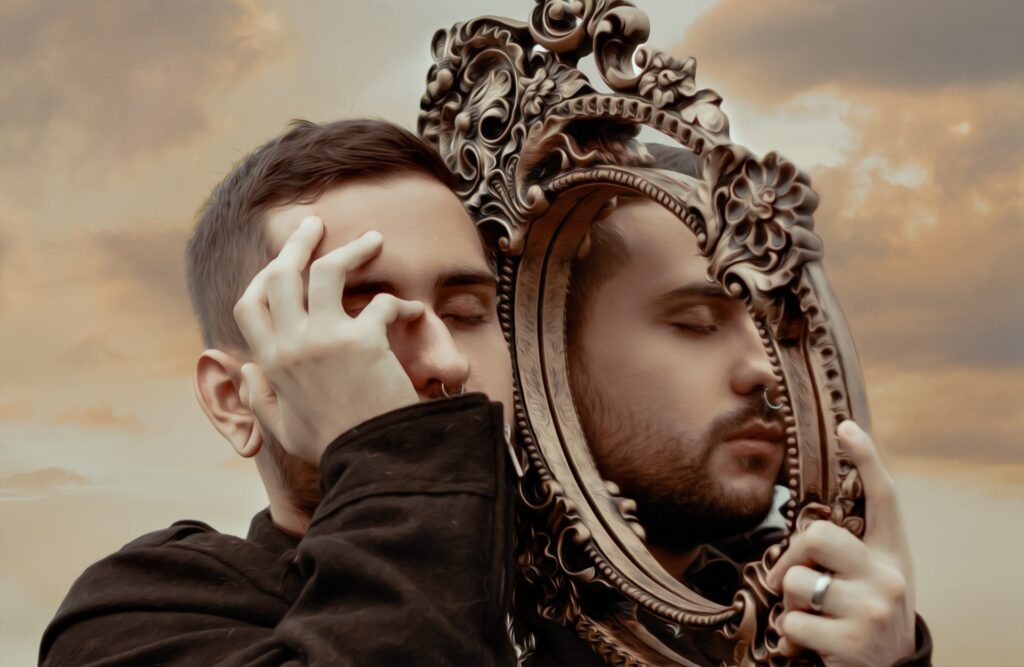
I suppose the general creepiness of magic mirrors being used for evil purposes—and their ability to create illusions—is a huge reason why mirrors are the object of so much dark superstition to this day.
But You Get the Idea: Mirrors Are Magical
In closing, I have to share the piece of my research that surprised me the most. And that was that the magic mirror in Snow White is based on a real mirror.
That’s right. There are several historical German figures who inspired the Snow White fairy tale, one of which was the young Maria Sophia Margaretha Catharina von Erthal. Maria was the daughter of a wealthy ambassador in eighteenth century Germany. She matched Snow White’s appearance perfectly and had a jealous stepmother. A stepmother who owned a famous mirror known as “The Talking Mirror.”
Apparently this trinket had an echo effect to reverberate one’s voice back to yourself when you spoke toward the glass. This was a pretty mind-blowing technology back in the day when people didn’t know how it worked. This talking mirror still exists today in a museum in Lohr Castle, Germany, where you can try out the voice trick yourself. So be sure to visit if you’re ever in the neighborhood. And definitely let me know if the mirror actually is possessed by the soul of a fortuneteller. I’m terribly curious. ❧

